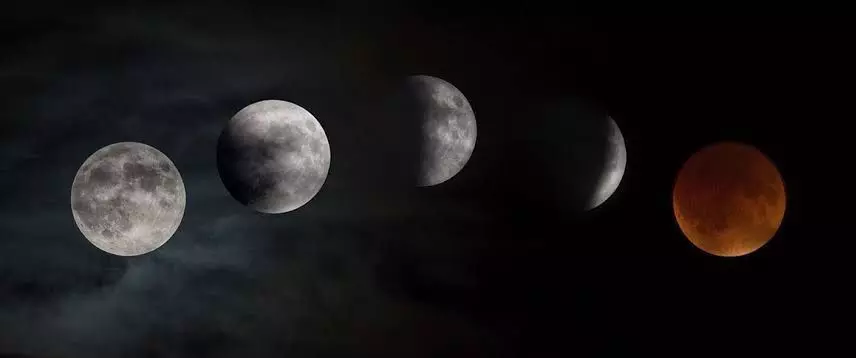Penumbral lunar eclipse will be visible in India: Here are the timings
The celestial event will take place on 5 May and will start at 8.44 p.m. and end at 1.01 a.m.
By Anoushka Caroline Williams
Hyderabad: The penumbral lunar eclipse will be visible in India. The celestial event will take place on 5 May and will start at 8.44 p.m. and end at 1.01 a.m. on 6 May. On 5 May, at 10.52 p.m., the maximum lunar eclipse will take place.
A penumbral lunar eclipse is challenging to see because of the minor dimming effect and the irregular alignment of the Sun, Moon, and Earth.
Additionally, a penumbral lunar eclipse can occasionally only be captured in precise photographs or by individuals with keen vision. Occasionally, the entire lunar surface will move into the penumbra. In this instance, the lunar eclipse is easier to observe without a telescope.
These occurrences are known as total penumbral lunar eclipses, according to experts. They are uncommon because it is very unlikely that the Moon will reach the umbra, the inner, darker region of the Earth’s shadow, once it has fully engulfed the penumbra. It’s known as a partial lunar eclipse when this happens.
"On 5th/6th May 2023 an eclipse of moon scientifically termed as “Penumblar Lunar Eclipse”* will occur. As per Indian Standard Time (IST) the phenomena of the Lunar Eclipse will occur from 8.42 p.m. IST on 5th May to 1.04 a .m. IST on 6th May 2023 as per Indian Standard Time (IST). However, this eclipse of the Moon is not noticeable to the bare eyes as Moon passes from a lighter shadow of Earth called Penumbra to a darker shadow called Umbra. Unfortunately, in recent times social media videos/articles have been exaggerating ( events that aren't visible)..spreading misinformation for views & readership to such articles/videos" said N. Sri Raghunandan Kumar an expert.
What is a penumbral lunar eclipse?
When the Earth passes between the Sun and the Moon and casts a shadow, there is a lunar eclipse. The penumbral lunar eclipse causes the Moon to move into the Earth’s outer shadow. Skywatchers will notice a dimming but not complete disappearance of the Moon.
When the Earth moves in front of the Moon and the Sun, a penumbral eclipse happens. As a result, Earth covers the Sun’s light, casting its shadow on the face of the Moon. This may result in a phenomenon that, in contrast to solar eclipses, may be subtle and challenging to spot.
The Moon enters the penumbra, or the lighter outer part of the Earth’s shadow, during a penumbral lunar eclipse. In this region, the Earth appears to cover a portion of the Sun’s disc but not the entire thing. This translates to the Moon being muted but still partly lit when it is within the penumbra of the Sun.
How to view the penumbral lunar eclipse?
Penumbral lunar eclipses often have a very faint influence on the Moon, and unless you pay extremely careful attention, you won’t normally see it.
Naturally, unlike a solar eclipse, lunar eclipses can be safely observed with both the unaided eye and other viewing tools. To see the eclipse more clearly, you can use binoculars or a telescope.
Country-wise visibility
Asia, Australia, Africa, the Pacific, Atlantic, Indian Ocean, Antarctica, and the majority of Europe will all see at least a portion of the penumbral eclipse.
Experts predict that because the Moon will lie below the horizon for the entirety of the time Earth is in the shadow of the Moon, the penumbral eclipse won’t be visible from North America, South America, or certain regions of Europe.